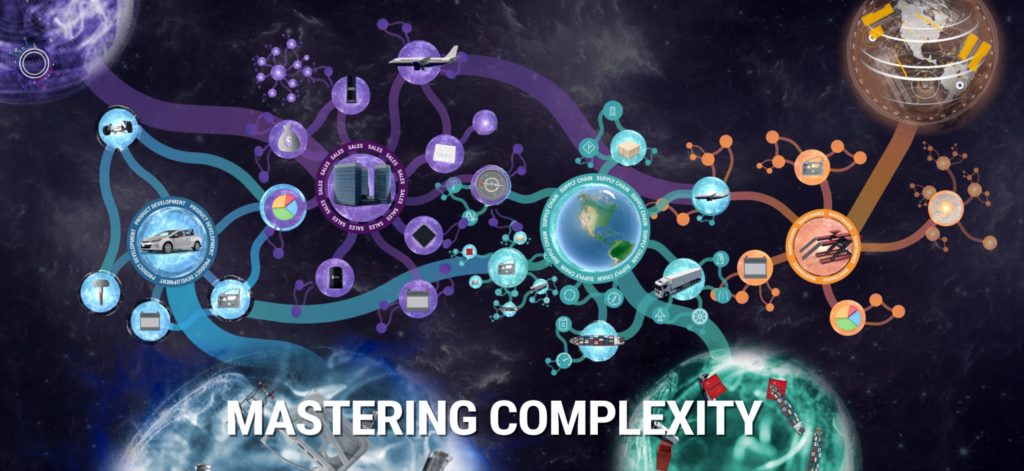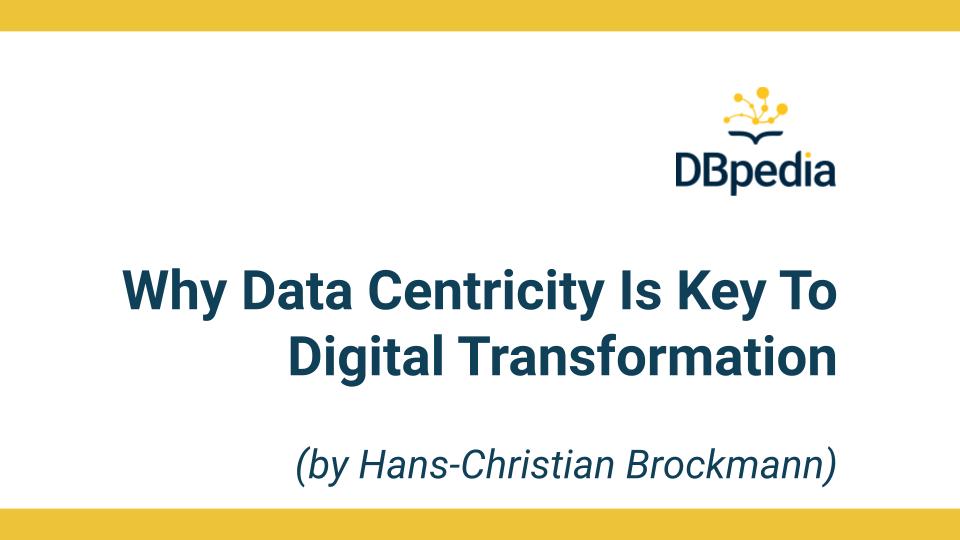DBpedia Member Features – Last year we gave DBpedia members the chance to present special products, tools and applications on the DBpedia blog. We have already published several posts in which our members provided unique insights. This week we will continue with eccenca. They will explain why companies struggle with digital transformation and why data centricity is the key to this transformation. Have fun while reading!
by Hans-Christian Brockmann, CEO eccenca
Why Data Centricity Is Key To Digital Transformation
Only a few large enterprises like Google, Amazon, and Uber have made the mindset and capability transition to turn data and knowledge into a strategic advantage. They have one thing in common: their roadmap is built on data-centric principles (and yes, they use knowledge graph technology)!
Over the last years it has become obvious that the majority of companies fail at digital transformation as long as they continue to follow their outdated IT management best practices. We, the knowledge graph community, have long been reacting to this with rather technical explanations about RDF and ontologies. While our arguments have been right at all times, they did not really address the elephant in the room: that it’s not only a technological issue but a question of mindset.
Commonly, IT management is stuck with application-centric principles. Solutions for a particular problem (e.g. financial transactions, data governance, GDPR compliance, customer relationship management) are thought about in singular applications. This has created a plethora of stand-alone applications in companies which store and process interrelated or even identical
data but are unable to integrate. That’s because every application has its own schema and data semantics. And companies have hundreds or even thousands different applications at work. Still, when talking about data integration projects or digital transformation the IT management starts the argument from an application point of view.

Companies Struggle With Digital Transformation Because Of Application Centricity
This application-centric mindset has created an IT quagmire. It prevents automation and digital
transformation because of three main shortcomings.
- Data IDs are local. The identification of data is restricted to its source application which prevents global identification, access and (re)use.
- Data semantics are local. The meaning of data, information about their constraints, rules and context are hidden either in the software code or in the user’s head. This makes it difficult to work cooperatively with data and also hinders automation of data-driven processes.
- The knowledge about data’s logic is IT turf. Business users who actually need this knowledge to scale their operations and develop their business in an agile way are always dependent on an overworked IT which knows the technicalities but doesn’t understand the business context and needs. Thus, scalability and agility are prevented from the start.
Data centricity changes this perspective because it puts data before applications. Moreover, it simplifies data management. The term was coined by author and IT veteran Dave McComb. The aim of data centricity is to “base all application functionality on a single, simple, extensible and federateable data model”, as Dave recently outlined in the latest Escape From Data Darkness
webcast episodes. At first, this might sound like advocating yet another one of these US$ 1bn data integration / consolidation projects done by a big name software vendor, the likes of which have failed over and over again. Alas, it’s quite the opposite.
A Central Data Hub For Knowledge Driven Automation
Data centricity does not strive to exchange the existing IT infrastructure with just another proprietary application. Data centricity embraces the open-world assumption and agility concepts and thus natively plays well with the rest of the data universe. The application-centric mindset always struggles with questions of integration, consolidation and a religious commitment to being the “single source of truth”. The data-centric mindset does not have to, because integration is (no pun intended) an integral part of the system. Or as Dave puts it in his book “The Data-Centric Revolution”: “In the Data-Centric approach […] integration is far simpler within a domain and across domains [because] it is not reliant on mastering a complex schema. […] In the Data-Centric approach, all identifiers (all keys) are globally unique. Because of this, the system integrates information for you. Everything relating to an entity is already connected to that entity” without having to even consolidate it in a central silo.
Of course, this sounds exactly like what we have been talking about all those years with knowledge graph technology and FAIR data. And we have seen it working beautifully with our customers like Nokia, Siemens, Daimler and Bosch. eccenca Corporate Memory has provided them with a central data hub for their enterprise information that digitalizes expert knowledge,
connects disparate data and makes it accessible to both machines and humans. Still, what we have learned from those projects is this: Conviction comes before technology, just as data comes before the application. Knowledge graph technology certainly is the key maker to digital transformation. But a data-centric mindset is key.
A big thank you to eccenca, especially Hans-Christian Brockmann for explainig why data centricity is the key to digital transformation. Four years ago eccenca became a member of the DBpedia Association and helped to increase the DBpedia network. Thanks for your contribution and constant support! Feel free to check out eccenca’s member presentation page: https://www.dbpedia.org/dbpedia-members/eccenca/
Yours,
DBpedia Association
- Did you consider this information as helpful?
- Yep!Not quite ...

